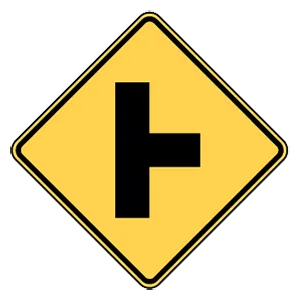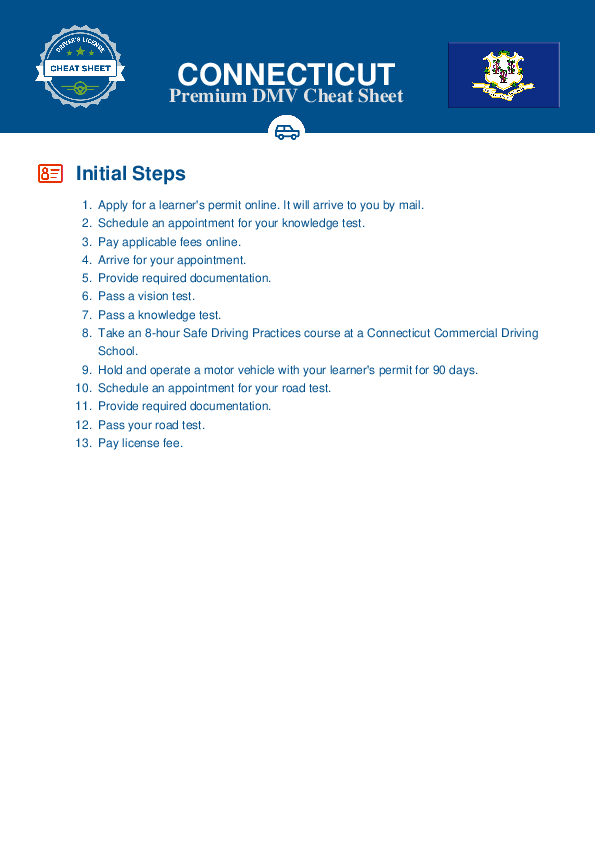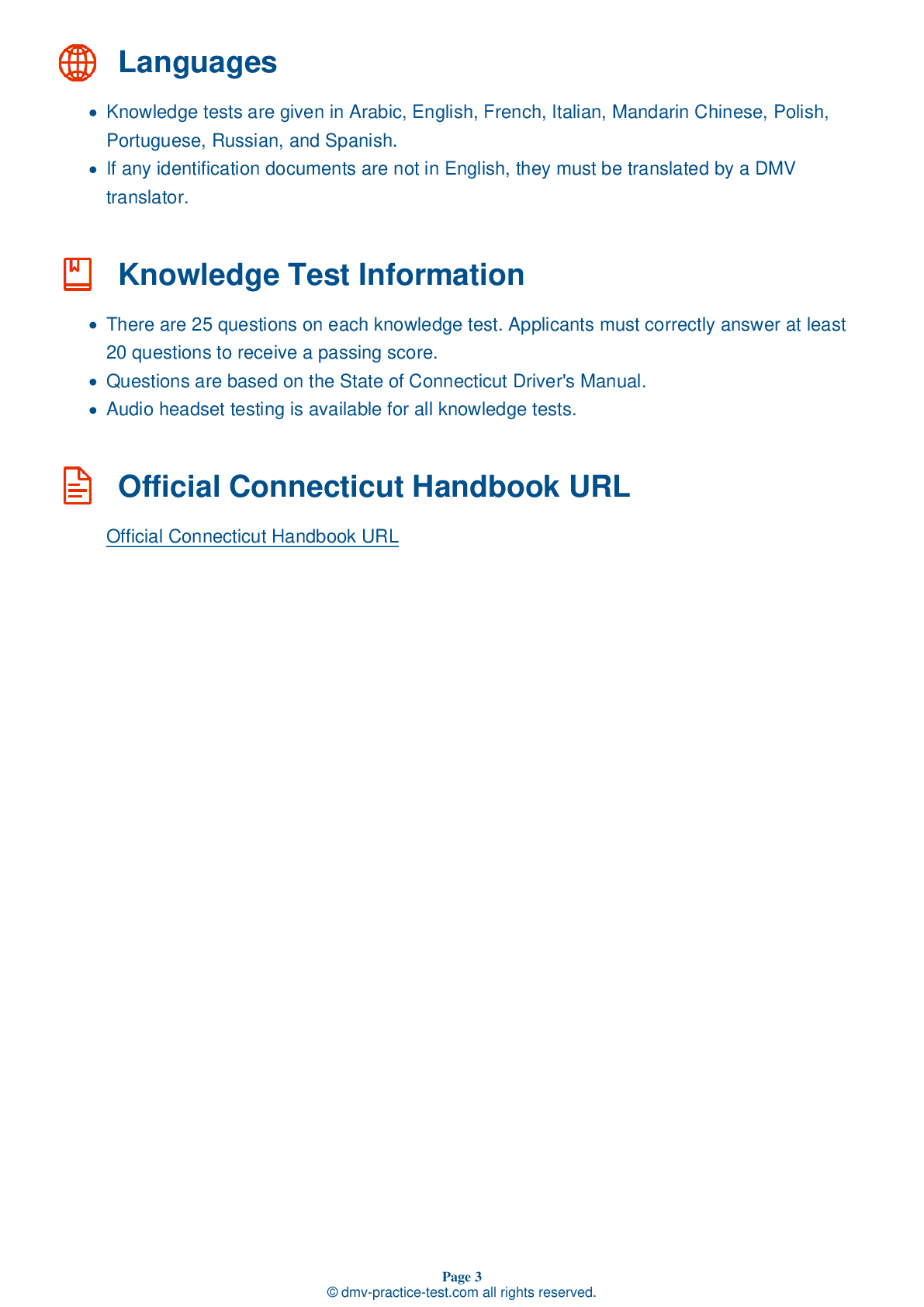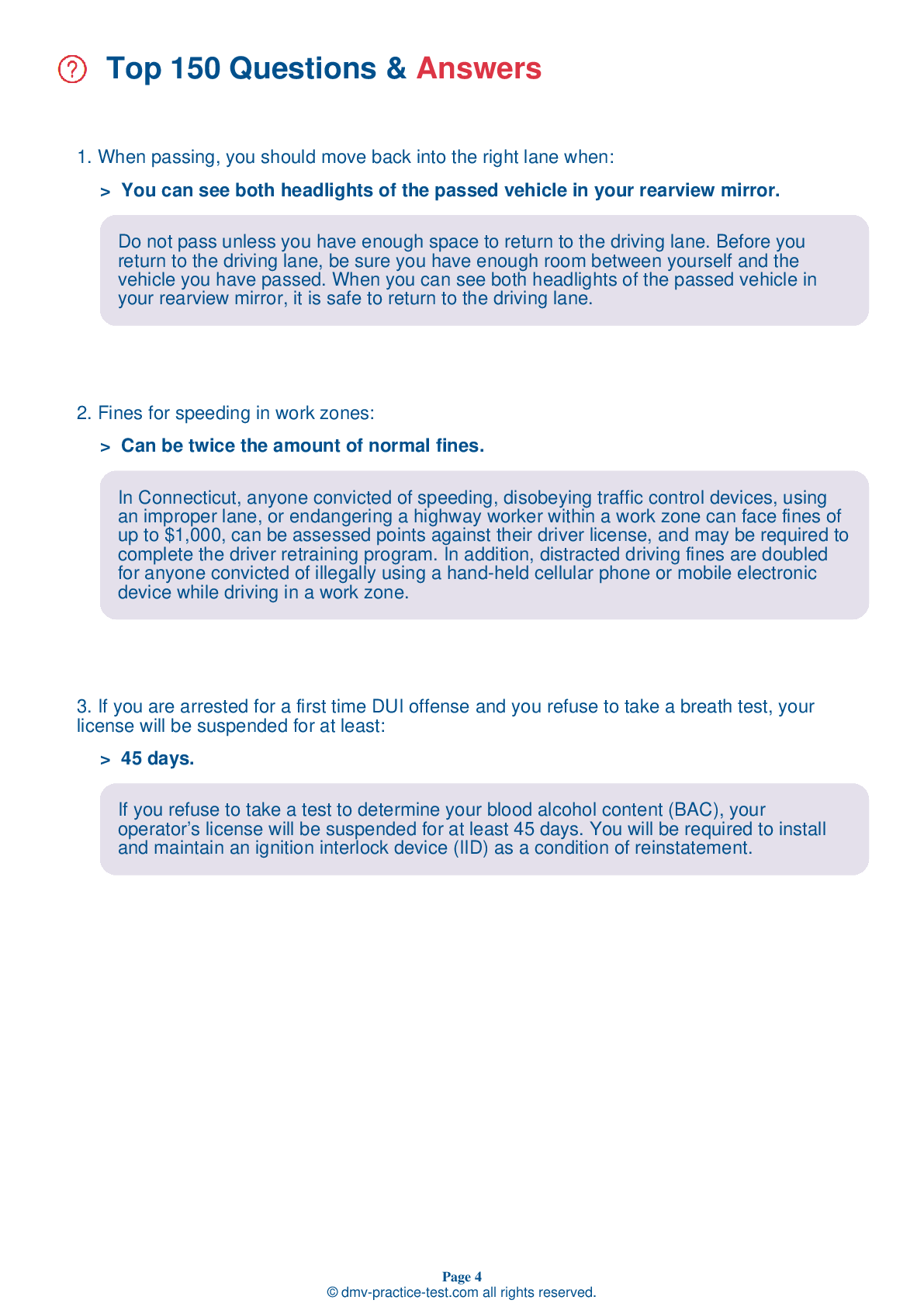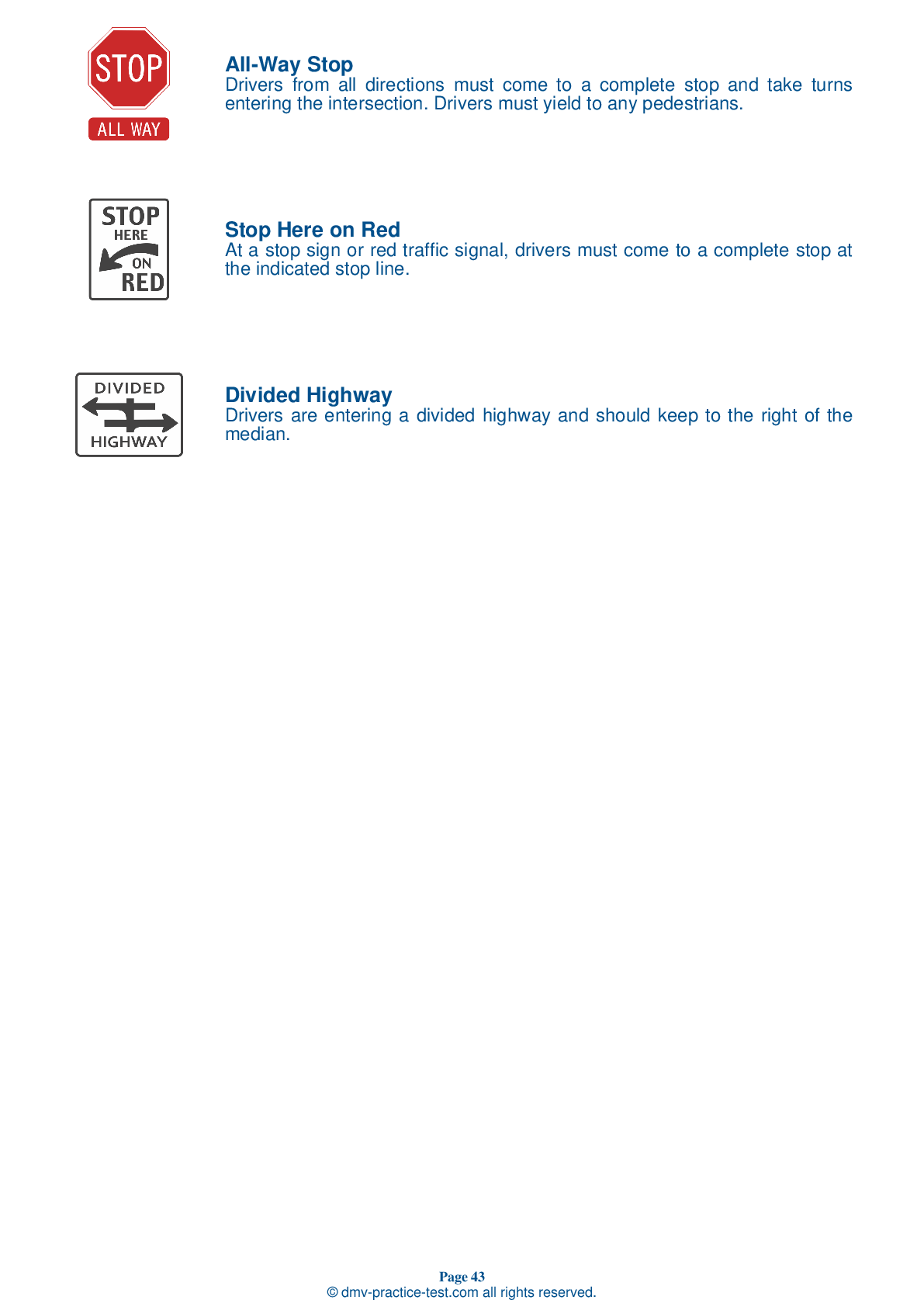FREE Connecticut DMV Practice Test #20 Page 2 of 3
This set of Connecticut DMV practise tests was just updated for January 2026. It includes questions based on the Connecticut Driver Handbook's most essential traffic signs and regulations for 2026. Use actual questions that are very similar (often identical!) to the DMV driving permit test and driver's licence exam to study for the DMV driving permit test and driver's licence exam.
Each practise test question has a hint and explanation to assist you in remembering the concepts. The written component of the official DMV test will include questions about road rules, traffic signs, and driving statutes, as well as information from the Driver Handbook.
To achieve the required passing grade, you must correctly answer 20 of the 25 questions. Take our DMV practise exam to help you prepare for your Connecticut instruction permit or driver's licence.
The DMV exam is available in several languages.
Using any form of testing help will result in an automatic fail, and the DMV may take further action against your driver's licence, so avoid it.
9 . When passing, you should move back into the right lane when:
Do not pass unless you have enough space to return to the driving lane. Before you return to the driving lane, be sure you have enough room between yourself and the vehicle you have passed. When you can see both headlights of the passed vehicle in your rearview mirror, it is safe to return to the driving lane.
10 . When turning left at an intersection:
Drivers making left turns must yield to oncoming traffic that is traveling straight. Drivers must always yield to pedestrians.
11 . What is the only medically proven method of removing alcohol or other drug combinations from your system?
Alcohol takes effect quickly and is slow to leave your system. Cold showers, black coffee, and exercise will do nothing to reduce a person's blood alcohol content (BAC). The only way to lower your BAC is to wait.
12 . This road sign means:
